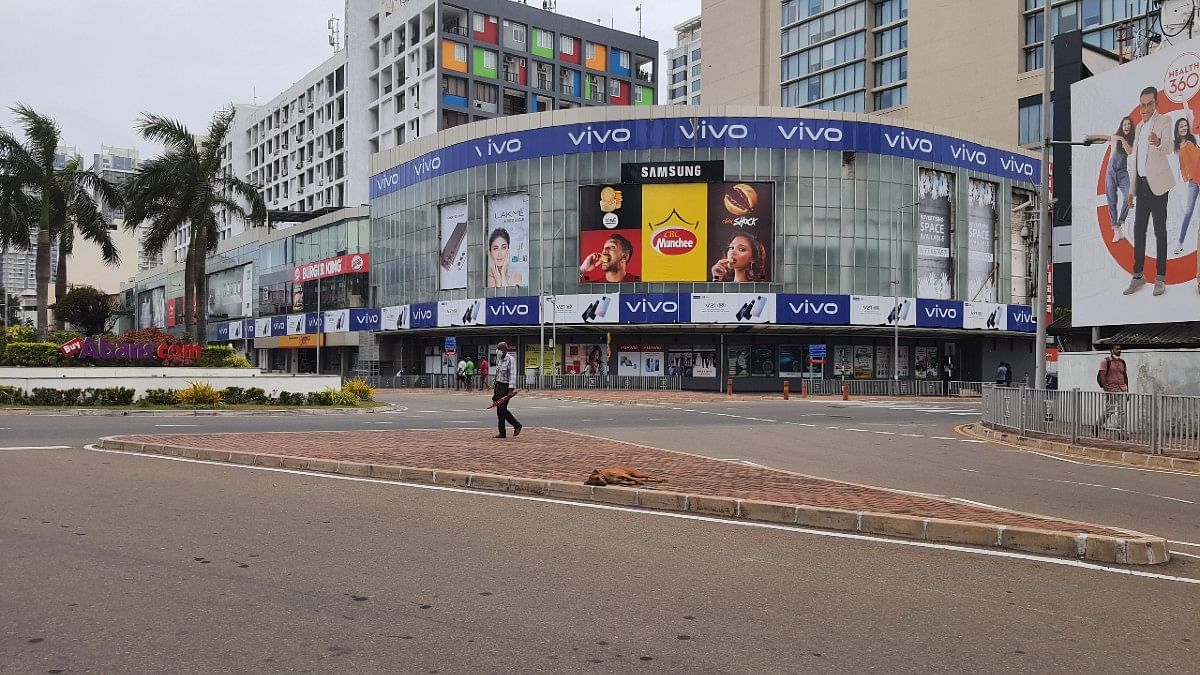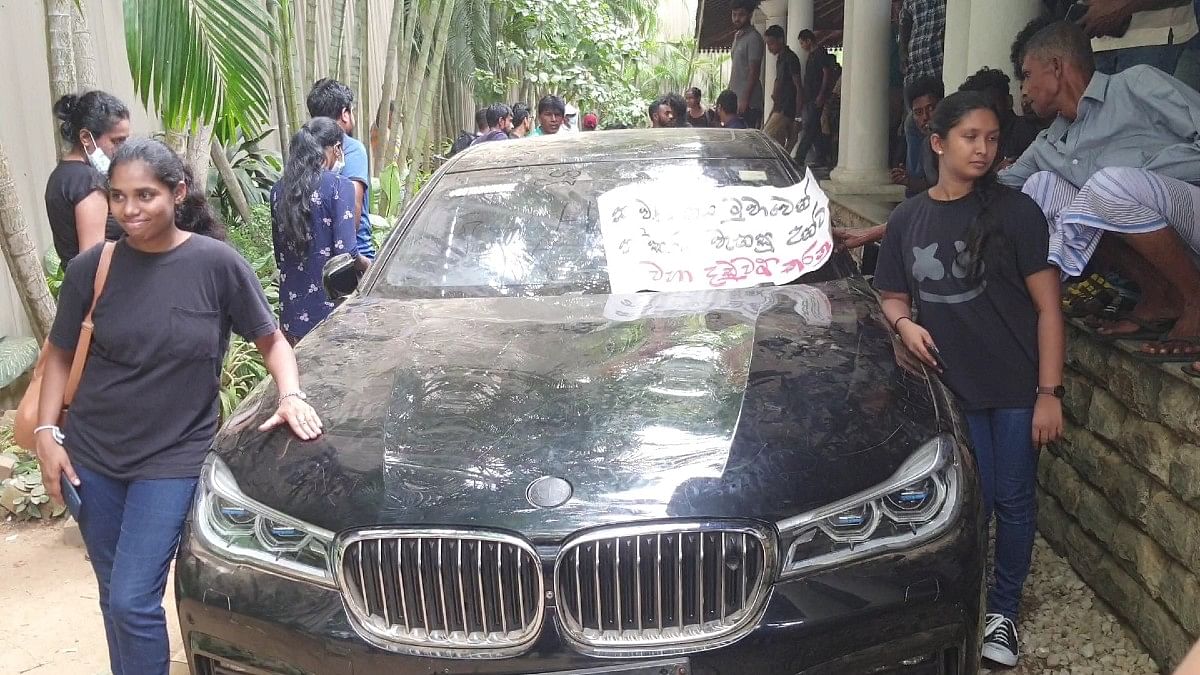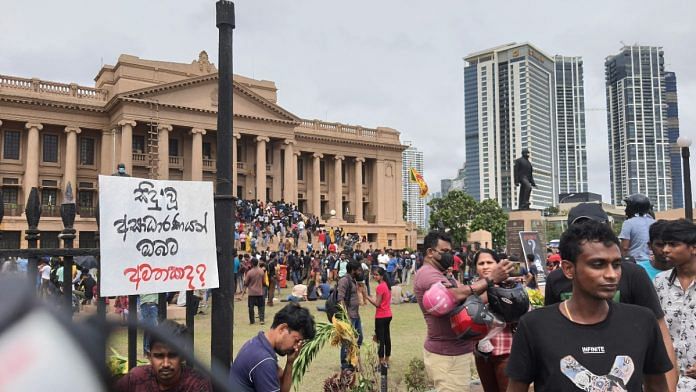Colombo: The 9 July anti-government protest in Colombo saw people storming into the Sri Lanka’s Presidential Secretariat and the official residences of president and prime minister.
The protesters had also set ablaze the personal residence of Prime Minister Ranil Wickremasinghe.
On Sunday, the day of Eid al-Adha, Sri Lankans came out in thousands to reach high-security state palatial homes that bore the brunt of attacks a day before. Colombo, at present, is calm but the VIP zone is crowded as a steady stream of people make their way into these premises. The public mood, meanwhile, remained the same: President Gotabaya Rajapaksa should bow out.
The President’s official residence, the Presidential Secretariat, and the main protest site at Galle Face are within a few hundred metres of each other. The personal home of Ranil is 1.5km away from his official residence, Temple Trees. The distance between the official residences of the top two leaders is about 4 km.

In contrast, the rest of Colombo wore a deserted look with few vehicles plying on the roads. A handful of people were seen at bus stands perhaps knowing that public transport would be hard to find. Most commuters either walked or cycled wearily in the humid weather.
A group stopped outside Ranil’s personal residence eager to know about the situation inside but the high walls blocked their view. The road outside was littered with crushed barricades, shards of broken glass and shoes hurriedly left back after Saturday’s attack. In the afternoon, police were seen in the area, with some inside the torched house to investigate what was earlier a VIP address.
At Temple Trees, the official residence of the Prime Minister, the gates were open with civilians entering the property whose gates are usually closed in normal times. People took selfies inside the rooms, ate lunch, and relaxed on the manicured lawns. People lounged on sofas and played carrom inside the PM’s official residence.
The thick metal fences were broken down through sheer force of protestors at the Presidential Secretariat, as thousands had landed at the site on Saturday. The main room was open to people. It now hosts the ‘public library’ that was at the main protest site called ‘GotaGo Village’.
About one km away, the large metal gates on the avenue leading to the gate of the President’s House had been rammed onto with a truck, said the protesters present there on Saturday.
The premises resembled more of a picnic spot as people swam in the swimming pool whose water had turned grey with dirt. Men laughed as they enjoyed themselves in the pool and joked with those standing outside to join and ”bathe” with them.

People pose with a luxury car inside the President’s official residence in Colombo on 10 July | ThePrint | Regina Mihindukulasuriya
People were mostly curious to see what it felt inside the palatial property. Some posed for selfies next to a black BMW that had long lost its metallic logo. People picked up things to take back as mementos — a woman took a chair with her from the president’s residence.
A protester told ThePrint that Saturday felt special and that it was the people’s power that forced President Gotabaya Rajapaksa to announce that 13 July would be his last day in power.
A man walked around the bathroom of the premises, looking for the shower head. Three washing machines — one of which was converted into a trash bin — lay unattended.
Near the washing machines, there were three men who admitted that the gadgets belonged to its former occupant. ”Take it with you and go. Anyway, we had paid for it (read, taxpayer’s money),” one of them said.
At the President’s House, protest organisers used loud speaker to educate people about the history of the mansion dating back to colonial years. They tried to control the crowds, urging them not to push each other. Some of them claimed that they would coordinate with the police to ensure that no big damage was done to the property.
Elsewhere, cars remained lined up on the roads and streets as their owners know petrol and diesel are hard to come by. The next shipment of fuel will come between 11 July and 14 July.
Ingenuity was noticed here as well as people parked their vehicles in advance in the hope of getting a resource that is harder to find than gold in Colombo. Lakmal, an auto driver, said he waited in a line for four days for petrol. “Things get nasty when people try to jump queues in the middle of the night,” he said
The situation is exacerbated by rationing of fuel as autos can only get stock for three days. Auto drivers are resorting to every trick to remain afloat. For example, Lakmal felt it was only worthwhile to charge 4,000 Sri Lankan rupees for a 13 km ride. The same ride in an Uber auto shows about 1,000 Sri Lankan rupees, but there is none available.
Another three-wheeler driver justified the high charges saying that he and his ilk wait for days to make a living. The auto driver, who said that he took part in the 9 July protest, said police exhausted all tear gas shells to target the protesters. “They (read, police) are dogs. I will never give any of them a ride in the night ever again after what they did Saturday,” he said.
(Edited by Tony Rai)
Also Read: Sri Lanka to Pakistan, South Asian nations are tying fortune to China’s infra projects & failing



